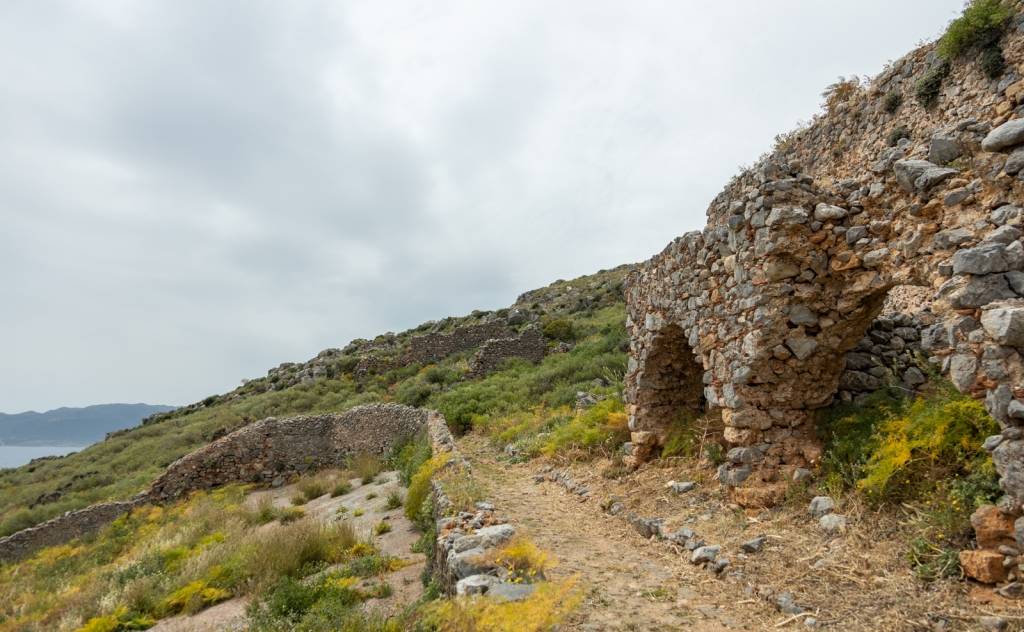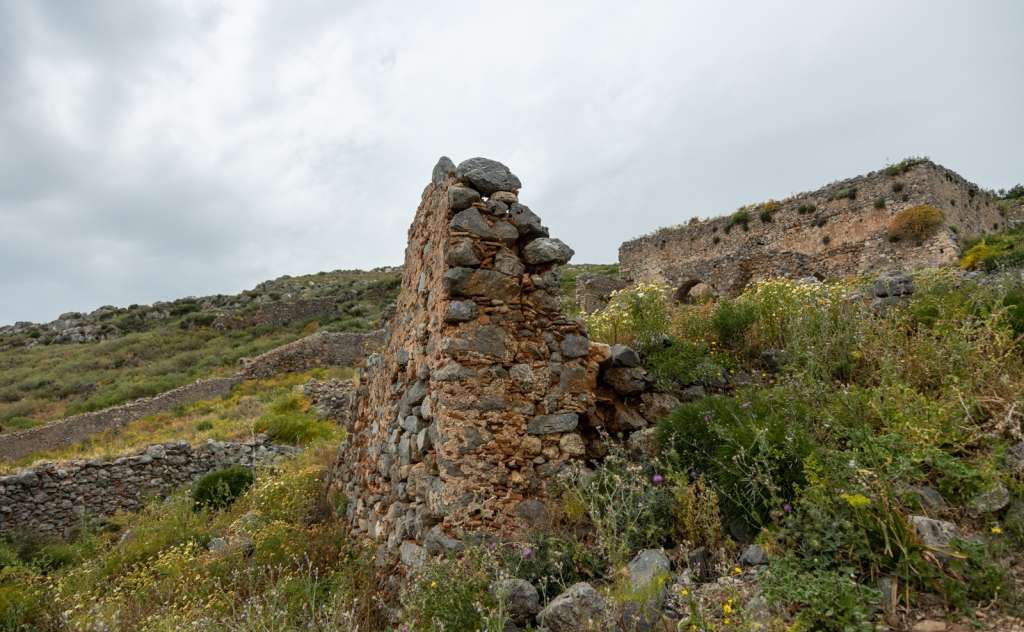Cisterns - Monemvasia
During the Byzantine period, the primary criterion for choosing a location for founding a city was the existence of water. The lack of spring water in Monemvasia dictated the creation of an organised water supply system with the construction of cisterns (water tanks) for the collection of rainwater. They are rectangular vaulted constructions coated with hydraulic mortar (kourasani) to ensure sealing.
Cisterns for public use are located in the free common areas of the settlement, in temples and in other public buildings. In fact, in 1670, Ottoman traveller Evliya Celebi noted many communal cisterns in Monemvasia, constituting an important monument of the area’s cultural heritage.
There are three large public cisterns in Ano Poli, "Katergo" or "Galeazza", "Karavi" or "Galera" and "Keratsini" or "Bastarda". Rainwater is collected internally from collecting surfaces and is pumped from orifices formed in their dome. In addition to the public tanks, there are also private cisterns built on the lower level of the houses. The rainwater collection is achieved through a system of clay pipes, while its pumping is done by stone orifices that, in some cases, have embossed decoration.
Cistern in the Catechumena: It is located on the west side of the Byzantine church of the Holy Theotokos (the Virgin Mary). It is an underground vaulted structure based on two colonnades of three columns with Early Christian capitals.
Cistern "Katergo" or "Galeazza": Semi-underground vaulted construction of post-Byzantine times with a collecting surface on its north side. It comes from the reconstruction of an older building and is surrounded by ancillary buildings.
Keratsini or Bastarda Cistern: Semi-basement vaulted building from the post-Byzantine times, repaired during the Second Venetian Occupation.
Cistern in Lipson: Semi-underground vaulted construction of post-Byzantine times.





